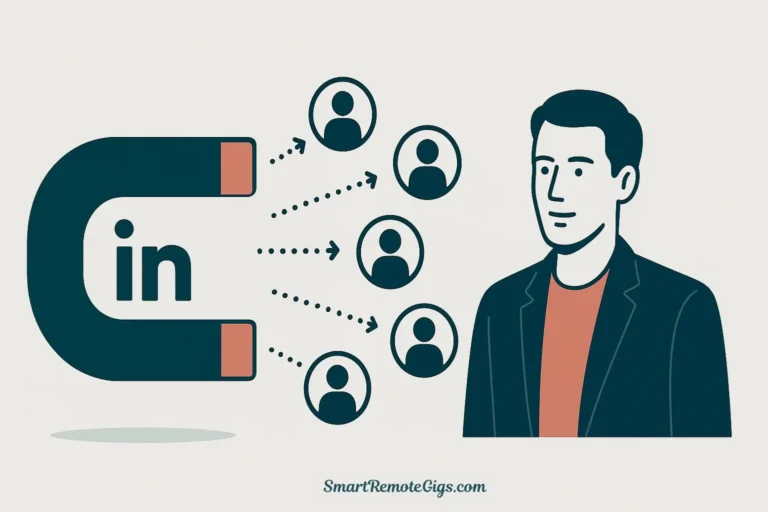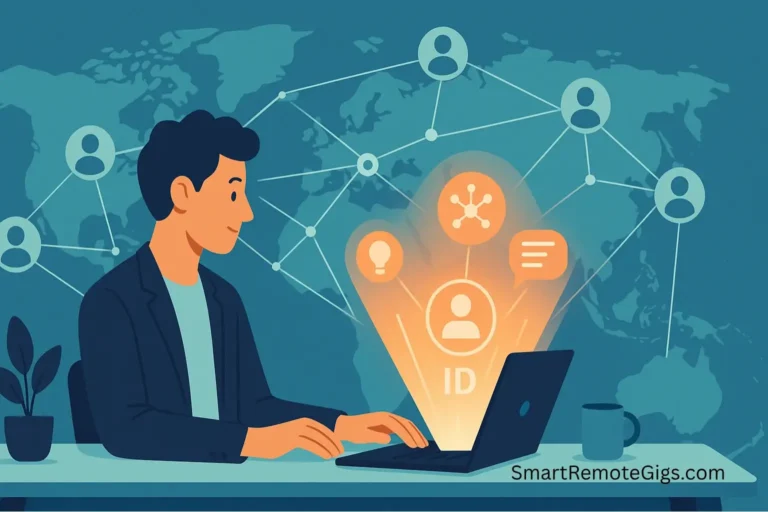Is your remote career stuck in neutral while others zoom past you? Your personal branding efforts might be working against you. In today’s competitive remote work landscape, personal branding mistakes can cost you opportunities, credibility, and career momentum. Research shows that professionals with strong personal brands earn 20% more and receive 5x more job opportunities than those without.
The stakes are even higher for remote workers. Without the benefit of face-to-face interactions and office visibility, your digital presence becomes your professional lifeline. Yet most remote professionals unknowingly sabotage their own success through common but costly branding blunders.
Let’s diagnose and fix the 7 most damaging personal branding mistakes that are silently derailing remote careers—and show you exactly how to transform each weakness into a competitive advantage.
Mistake #1: Having a Generic Profile (The LinkedIn Invisibility Trap)

The Problem: Your LinkedIn profile reads like everyone else’s. Generic job titles, boring descriptions, and zero personality make you invisible to recruiters and opportunities.
Generic profiles are the kiss of death in remote work. When hiring managers scan hundreds of profiles, bland and forgettable content gets instantly dismissed. Your profile becomes digital wallpaper—present but completely ignored.
Warning Signs You’re Making This Mistake:
- Your headline is just your job title
- Your summary starts with “I am a…”
- You haven’t updated your profile in 6+ months
- Zero engagement on your posts or content
- Recruiters aren’t reaching out despite your experience
The Hidden Cost: According to Harvard Business Review research, generic profiles reduce interview callbacks by up to 40%. For remote positions where competition is fierce, this generic approach is career suicide.
The Fix: Transform your profile into a value-driven magnet that attracts the right opportunities. Instead of listing what you do, showcase the impact you create. Your headline should communicate your unique value proposition, not just your title.
Example Transformation:
Before: “Marketing Manager at Tech Company”
After: “Remote Marketing Manager | B2B SaaS Growth Expert | Helping startups scale from $0 to $10M through data-driven campaigns”
For a complete profile makeover strategy, check out our detailed guide: Remote Job LinkedIn Profile: 10 Tips for Getting Hired.
Mistake #2: Broadcasting Instead of Engaging (The Social Media Megaphone)
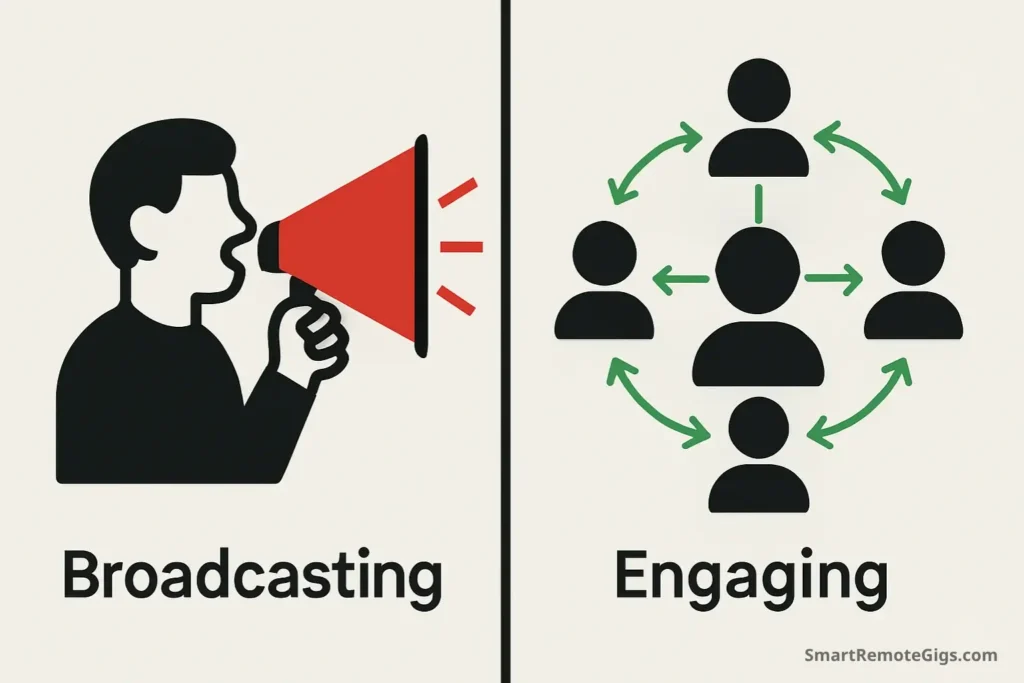
The Problem: You treat social media like a billboard instead of a conversation. Constant self-promotion without genuine engagement makes you look desperate and disconnected from your professional community.
This bad personal branding approach turns your network into an audience that tunes out. Real influence comes from genuine interactions, not promotional broadcasts. Remote professionals especially need to build authentic relationships since they can’t rely on water cooler conversations.
What Broadcasting Looks Like:
- Every post is about your achievements
- You never comment on others’ content
- Your posts sound like press releases
- You only share your own content
- No genuine conversations in your comments
The Engagement Deficit Impact: LinkedIn’s algorithm prioritizes content with high engagement rates. Broadcasting kills engagement, which reduces your visibility, which reduces opportunities. It’s a vicious cycle that many remote professionals fall into without realizing it.
Strategic Engagement Approach: Follow the 80/20 rule: 80% valuable insights and conversations, 20% self-promotion. Share industry insights, comment thoughtfully on others’ posts, and start meaningful discussions about remote work career mistakes and solutions.
Engagement Formula That Works:
- Share insights from your remote work experience
- Ask questions that start industry conversations
- Comment meaningfully on 5-10 posts daily
- Celebrate others’ achievements and milestones
- Share valuable resources that help your network
The key is building relationships before you need them. For advanced networking strategies that actually work, dive into our guide: Virtual Networking article.
Mistake #3: Having No Clear Niche or Unique Value Proposition (The Jack-of-All-Trades Trap)
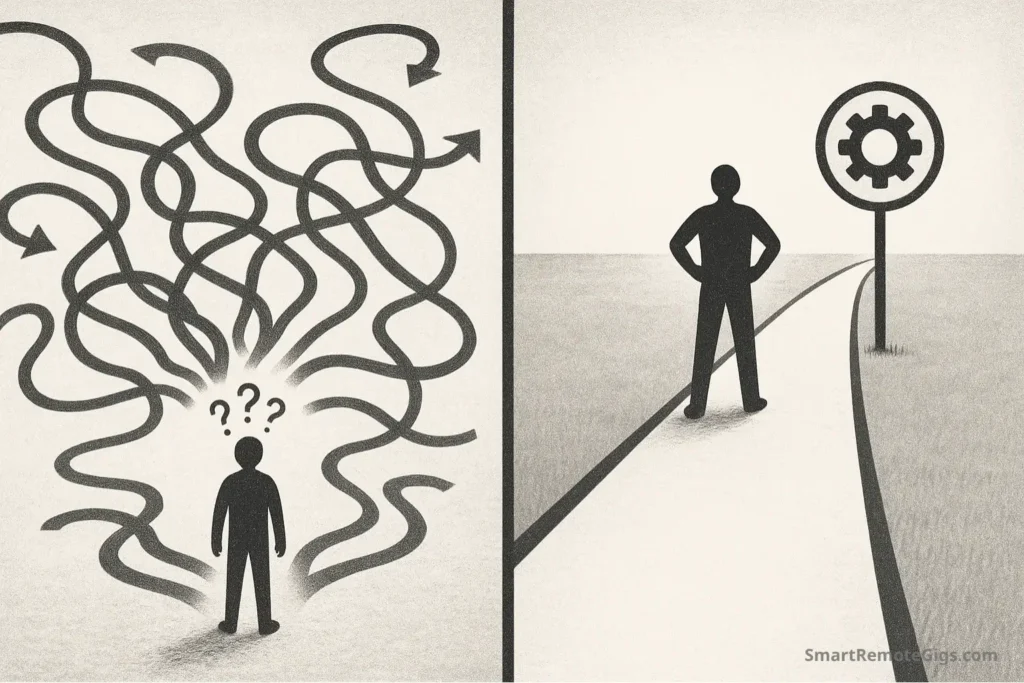
The Problem: You position yourself as someone who can “do everything” instead of the person who solves specific problems exceptionally well. This scattered approach makes you forgettable and difficult to refer.
In remote work, specialists typically out-earn and out-opportunity generalists by significant margins. When you try to appeal to everyone, you appeal to no one. Hiring managers want experts who can solve their specific challenges, not generalists who might be able to help.
Signs You’re Stuck in This Trap:
- Your LinkedIn summary mentions 10+ different skills
- You apply to wildly different types of remote jobs
- People can’t explain what you do in one sentence
- You get generic “thanks for connecting” messages
- Referrals are rare because people don’t know how to position you
The Clarity Crisis: Research from the Harvard Business School shows that professionals with clear positioning earn 23% more than those without. In remote work, where trust and expertise are paramount, a unclear value proposition is a career killer.
The Niche Navigation Framework:
Step | Action | Remote Work Application |
|---|---|---|
1. Skill Audit | List your top 5 professional strengths | Focus on remote-deliverable skills |
2. Market Research | Identify high-demand remote opportunities | Research salary ranges and growth potential |
3. Intersection Analysis | Find where your skills meet market demand | Your sweet spot for remote positioning |
4. Value Proposition | Craft your unique promise | What specific problem do you solve remotely? |
5. Test & Refine | Monitor response to your new positioning | Adjust based on market feedback |
Niche Selection Criteria for Remote Workers:
- High demand in remote job markets
- Measurable outcomes you can deliver
- Scalable impact across time zones
- Digital delivery capability
- Clear communication of value
Once you identify your niche, every piece of content, every conversation, and every opportunity should reinforce your expertise in that area. For the complete foundation-building strategy, explore our comprehensive resource: The Remote Personal Branding Playbook: A Complete Guide.
Mistake #4: Inconsistent (or Zero) Content Strategy (The Digital Tumbleweed Effect)
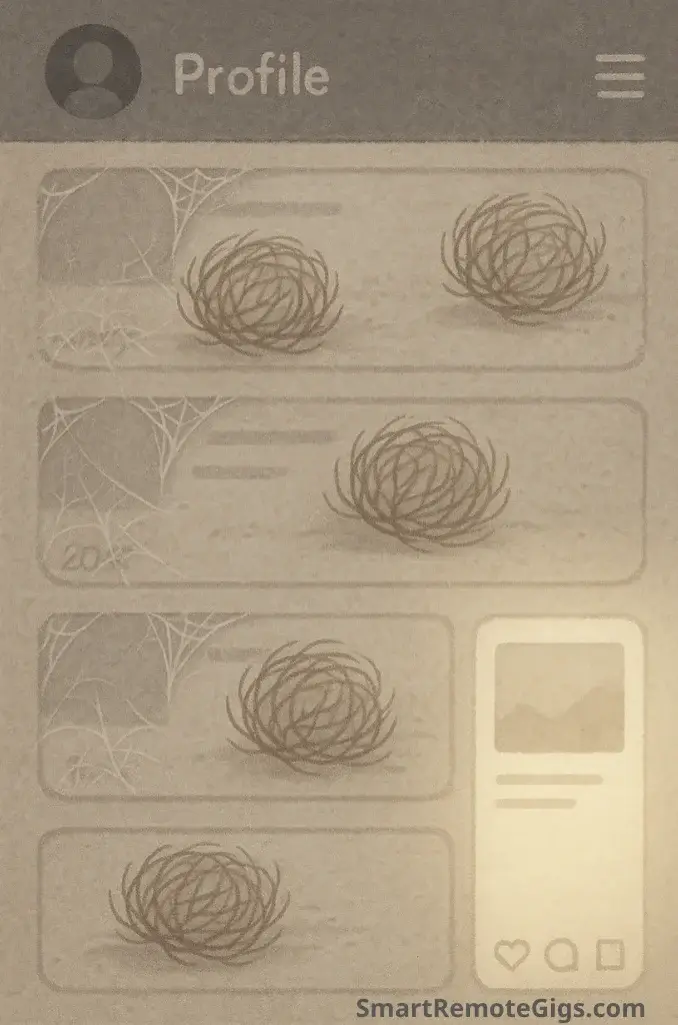
The Problem: Your content creation is sporadic, unplanned, or nonexistent. You post randomly when inspiration strikes, then disappear for weeks. This inconsistency makes you forgettable and unreliable in the eyes of your network.
Content consistency is crucial for remote professionals because it’s your primary way of staying visible and demonstrating expertise. Without regular touchpoints, you become “out of sight, out of mind” to potential opportunities.
The Inconsistency Indicators:
- Months between LinkedIn posts
- No clear theme or expertise area in your content
- Posting only when you need something (job hunting, promoting a project)
- Content quality varies dramatically
- Zero content planning or editorial calendar
The Cost of Content Chaos: According to Content Marketing Institute data, professionals who post consistently are 7x more likely to be contacted for opportunities. For remote workers, this visibility gap can mean the difference between career growth and stagnation.
Content Strategy Framework for Remote Professionals:
The 3-Pillar Content Approach:
- Educational Content (40%) – Share insights from your remote work experience
- Industry Commentary (40%) – Provide thoughtful takes on industry trends
- Personal Stories (20%) – Share lessons learned and behind-the-scenes moments
Content Calendar Structure:
- Monday: Industry insight or trend commentary
- Wednesday: Educational tip or tutorial
- Friday: Personal story or lesson learned
Content Ideas That Work for Remote Professionals:
- “3 lessons I learned managing a remote team across 5 time zones”
- “The tool that transformed my remote productivity (and why)”
- “How I built relationships with colleagues I’ve never met in person”
- “Remote work mistake that cost me a promotion (and how I fixed it)”
Content Amplification Strategy: Don’t just post and pray. Engage with others who comment, share your content in relevant groups, and repurpose your best-performing posts into different formats.
For a complete content strategy that positions you as a remote work thought leader, check out our detailed blueprint: Content Strategy article.
Mistake #5: Being a Digital Ghost Outside of Work Hours (The 9-to-5 Invisibility)
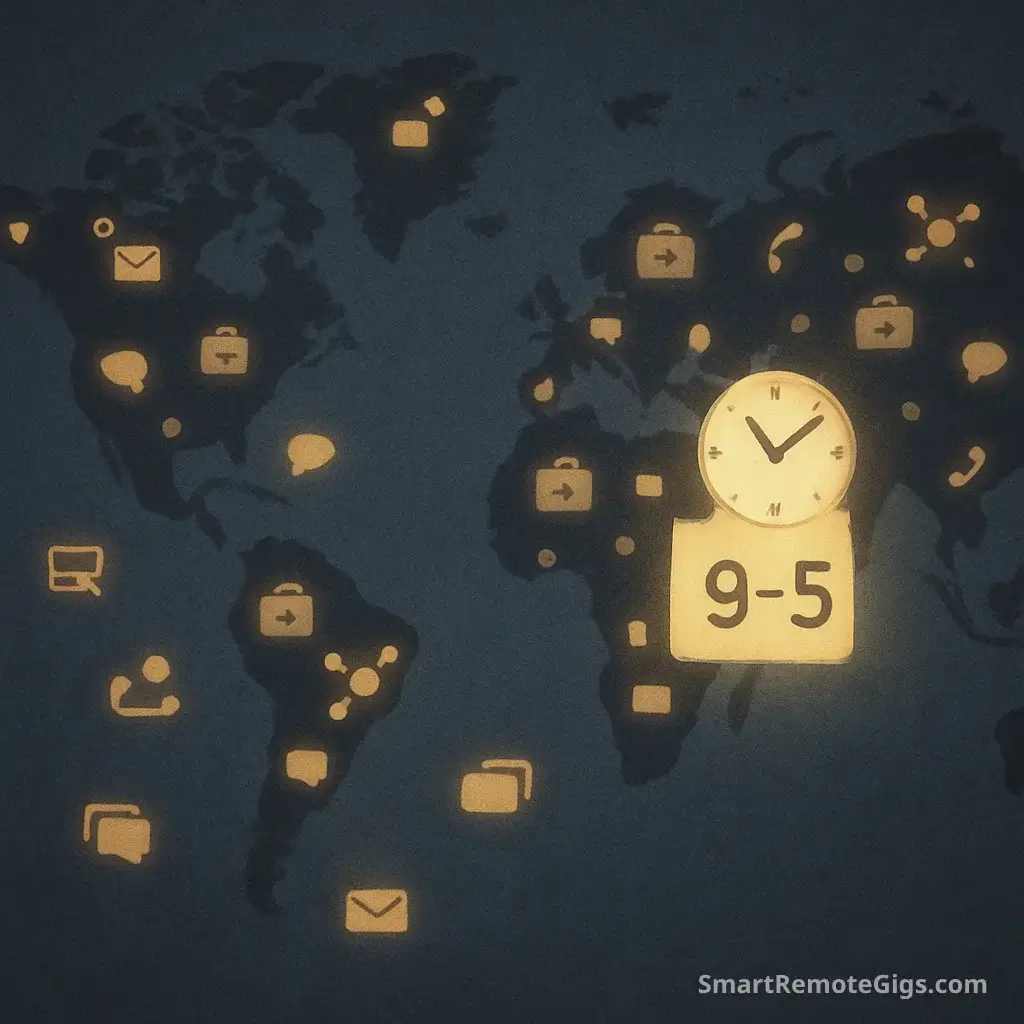
The Problem: You only engage professionally during traditional work hours, then vanish completely from professional platforms evenings and weekends. This rigid schedule mindset kills networking opportunities and makes you seem less committed to your professional growth.
Remote work operates on a 24/7 global schedule. Opportunities don’t respect your local time zone, and the best networking often happens during informal moments when people are more relaxed and open to genuine connection.
Digital Ghost Symptoms:
- Professional social media goes silent after 5 PM
- Never engage with content on weekends
- Miss networking events because they’re outside “work hours”
- Limited availability for informational interviews
- Structured, formal communication style only
The Global Opportunity Cost: When you operate on a strict local schedule, you miss connecting with professionals in other time zones. The remote work community is global, and some of the best opportunities come from unexpected connections at unexpected times.
Strategic Visibility Framework:
Smart Engagement Windows:
- Early morning (6-8 AM local): Catch the previous day’s global activity
- Lunch hours (12-1 PM): High LinkedIn activity time
- Evening hours (6-8 PM local): Engage with global professionals starting their day
- Weekend mornings: Share more personal professional insights
The 70/30 Rule: Spend 70% of your professional engagement during business hours, but reserve 30% for off-hours networking and relationship building. This balanced approach keeps you visible without appearing to have no boundaries.
Off-Hours Engagement Strategy:
- Share thoughtful industry articles with your commentary
- Engage meaningfully with others’ weekend posts
- Participate in virtual events and webinars
- Send personalized connection requests
- Comment on industry discussions in global LinkedIn groups
Boundary Management: Being visible doesn’t mean being available 24/7. Set clear communication expectations while maintaining strategic professional presence. Use scheduling tools to maintain consistency without sacrificing personal time.
Mistake #6: Ignoring the Power of a Personal Website (The Platform Poverty)

The Problem: You rely entirely on LinkedIn and other platforms you don’t control, missing the opportunity to create a professional home base that showcases your expertise comprehensively.
A personal website isn’t vanity—it’s a professional necessity for remote workers. It’s your digital headquarters, portfolio, and credibility booster all in one. Without it, you’re building your professional presence on rented land.
Website-Less Warning Signs:
- All your professional content lives on LinkedIn only
- No central place to showcase your portfolio
- Difficulty sharing comprehensive case studies
- Limited space to demonstrate expertise depth
- No way to capture leads or networking inquiries
The Professional Website ROI: Professionals with personal websites receive 40% more opportunities and are perceived as 65% more credible than those without. For remote workers, where trust and competence must be established digitally, a website is essential infrastructure.
Essential Website Components for Remote Professionals:
Homepage Elements:
- Clear value proposition and niche expertise
- Professional headshot and brief bio
- Call-to-action for networking/opportunities
- Links to your best content and social profiles
Core Pages You Need:
- About Page: Your professional story and expertise
- Portfolio/Case Studies: Specific examples of remote work success
- Blog/Insights: Regular content demonstrating thought leadership
- Contact: Clear ways to connect and collaborate
Content That Converts:
- Case studies showing remote project success
- Client testimonials validating your remote work capabilities
- Resource downloads that capture visitor information
- Speaking topics if you do virtual presentations
- Collaboration guidelines for potential remote partnerships
Technical Considerations:
- Mobile-responsive design (60% of professional browsing is mobile)
- Fast loading speed (critical for professional credibility)
- SEO optimization for your name and expertise area
- Easy navigation and clear contact information
Website Success Metrics:
- Monthly unique visitors
- Average time on site
- Contact form submissions
- Social media traffic referrals
- Search rankings for your name and expertise
Your website should work as your 24/7 professional representative, converting visitors into networking connections and potential opportunities. It’s particularly powerful for remote professionals because it demonstrates your ability to create professional digital experiences—a key remote work skill.
The Recovery Plan: Transforming Mistakes into Competitive Advantages
Personal branding mistakes aren’t permanent career killers—they’re fixable problems that, once addressed, can become significant competitive advantages. The key is systematic transformation, not overwhelming overhaul.
The 30-Day Brand Recovery Blueprint:
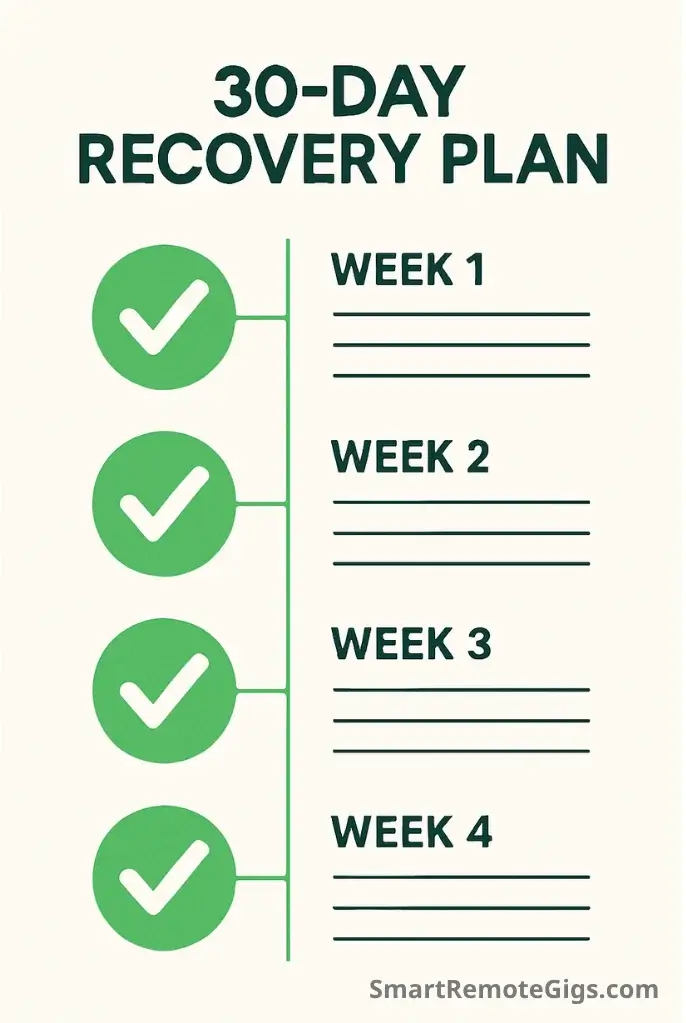
Week 1: Foundation Reset
- Audit your current digital presence across all platforms
- Identify which mistakes are costing you the most opportunities
- Choose your primary niche and value proposition
- Update your LinkedIn headline and summary
Week 2: Content & Engagement
- Create a basic content calendar for the next month
- Engage meaningfully with 10 professionals daily
- Share your first piece of valuable industry insight
- Join 3 relevant professional groups or communities
Week 3: Relationship Building
- Reach out to 5 former colleagues for recommendations
- Schedule 2 informational interviews with industry leaders
- Comment thoughtfully on 20+ posts from your network
- Share someone else’s content with your insights added
Week 4: Optimization & Systems
- Set up basic website or landing page
- Create templates for consistent engagement
- Schedule content for the following month
- Measure and adjust based on initial results
Progress Tracking Metrics:
- Profile views and connection requests
- Content engagement rates
- Networking conversation quality
- Opportunity inquiries or outreach
Long-term Brand Building: Personal branding isn’t a one-time fix—it’s an ongoing professional practice. The most successful remote professionals treat their brand as a living asset that requires regular attention and refinement.
Quarterly Brand Audits:
- Review what content performed best
- Assess which networking approaches yielded opportunities
- Update your positioning based on market changes
- Refresh your value proposition and portfolio
Remember: your competitors are making these same remote work career mistakes right now. By addressing them systematically, you don’t just fix problems—you gain significant competitive advantages in the remote job market.
Your Brand Recovery Starts Now
These personal branding mistakes might feel overwhelming, but they’re all completely fixable with the right strategy and consistent effort. The remote professionals who succeed aren’t necessarily the most talented—they’re the ones who understand that their brand is their most valuable career asset.
Every day you wait to fix your personal brand is another day of missed opportunities, lost connections, and diminished professional impact. But here’s the encouraging truth: small, consistent improvements compound quickly in the digital world.
Your dream remote role isn’t just about having the right skills—it’s about positioning those skills in a way that makes you the obvious choice when opportunities arise. The professionals who master this positioning are the ones who get the best opportunities, highest compensation, and most career satisfaction.
Ready to transform your professional presence from invisible to irresistible? These mistakes are just the beginning of your brand transformation journey. For a comprehensive strategy that covers everything from foundational positioning to advanced networking and content creation, dive into our complete guide: The Remote Personal Branding Playbook: A Complete Guide.
Your future self will thank you for taking action today. The remote work revolution is creating unprecedented opportunities for professionals who know how to position themselves strategically. Don’t let personal branding mistakes keep you from claiming your share of this incredible career transformation.
Start with just one mistake from this list today. Your brand—and your career—will never be the same.
Quick Action Checklist:
Remember: Perfect is the enemy of good. Take imperfect action today rather than waiting for the perfect moment that never comes.
6 Personal Branding Mistakes That Cost Remote Professionals

Mistake #1: Having a Generic Profile (The LinkedIn Invisibility Trap)
The Problem: Your LinkedIn profile reads like everyone else’s. Generic job titles, boring descriptions, and zero personality make you invisible to recruiters and opportunities.
The Fix: Transform your profile into a value-driven magnet. Instead of listing what you do, showcase the impact you create with a headline that communicates your unique value proposition.
Editor's Rating:
Visit Website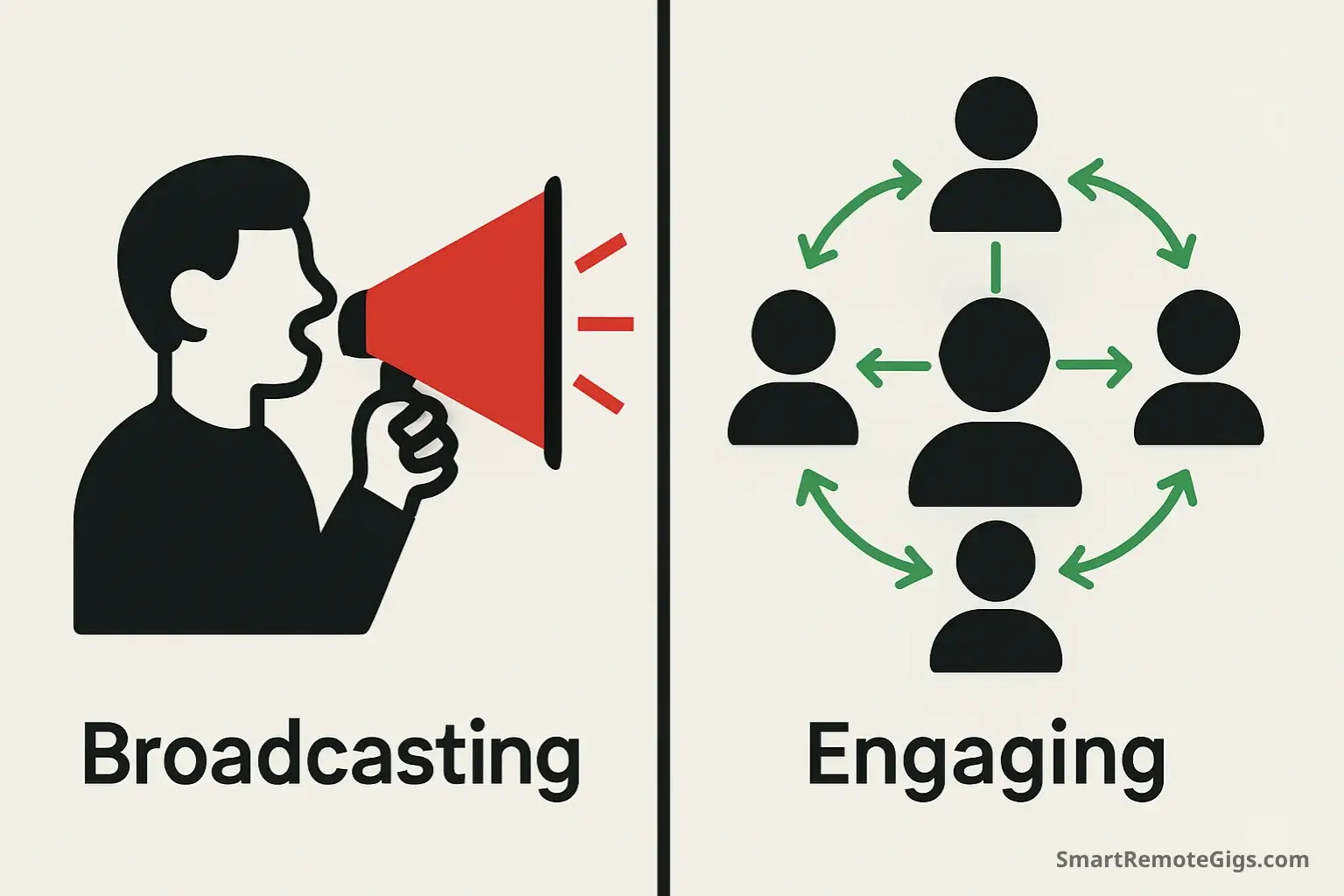
Mistake #2: Broadcasting Instead of Engaging (The Social Media Megaphone)
The Problem: You treat social media like a billboard instead of a conversation. Constant self-promotion without genuine engagement makes you look desperate and disconnected.
The Fix: Follow the 80/20 rule: 80% valuable insights and conversations, 20% self-promotion. Share industry insights and comment thoughtfully on others’ posts to build real relationships.
Editor's Rating:
Visit Website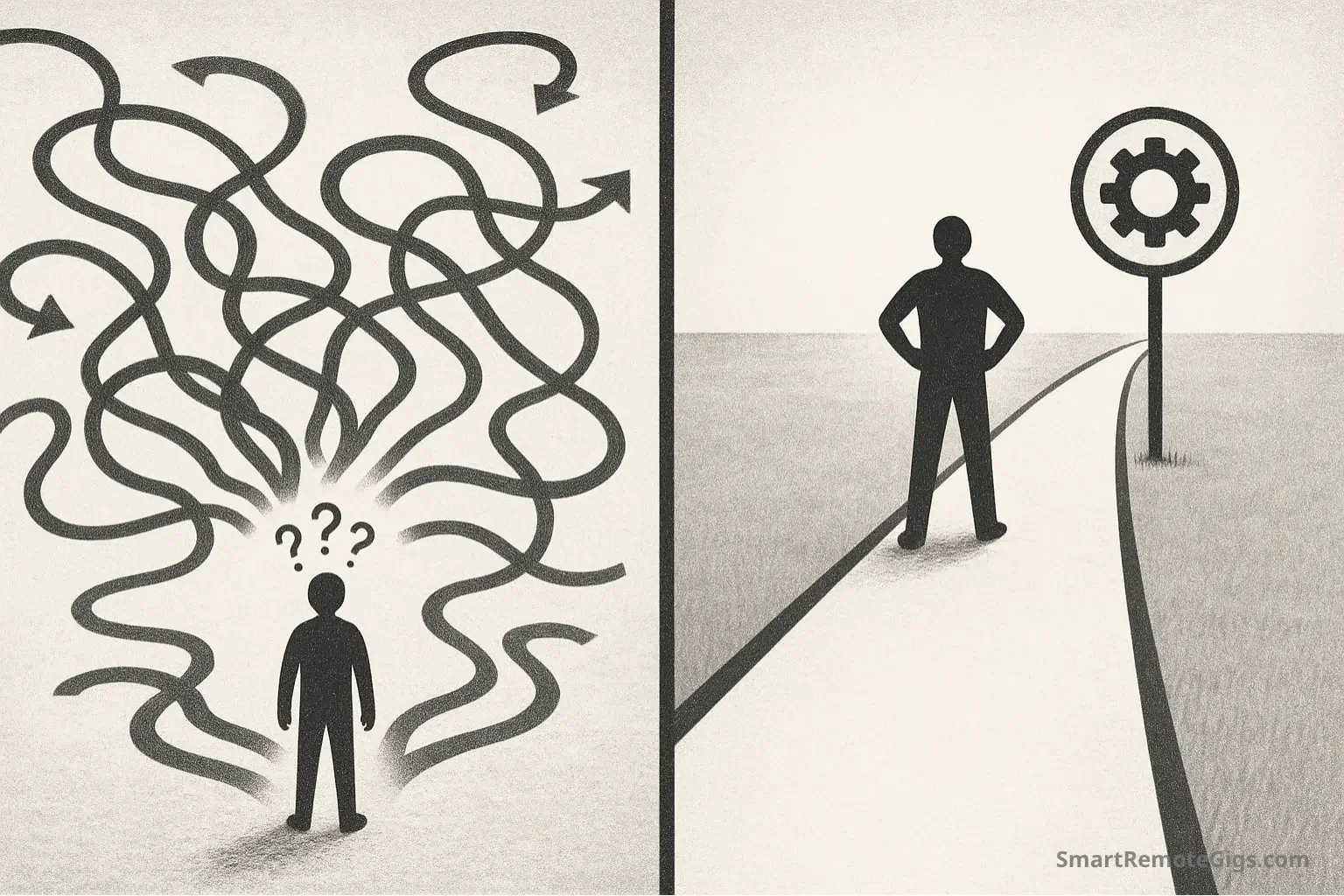
Mistake #3: Having No Clear Niche or Unique Value Proposition
The Problem: You position yourself as someone who can 'do everything' instead of the person who solves specific problems exceptionally well. This makes you forgettable.
The Fix: Use the Niche Navigation Framework. Audit your skills, research market demand, and find the intersection to craft a unique value proposition that makes you the go-to expert.
Editor's Rating:
Visit Website
Mistake #4: Inconsistent (or Zero) Content Strategy
The Problem: Your content creation is sporadic, unplanned, or nonexistent. This inconsistency makes you forgettable and unreliable in the eyes of your network.
The Fix: Use the 3-Pillar Content Approach (Educational, Industry Commentary, Personal Stories) and a simple content calendar to plan your posts and maintain consistency.
Editor's Rating:
Visit Website
Mistake #5: Being a Digital Ghost Outside of Work Hours
The Problem: You only engage professionally during traditional work hours, killing networking opportunities in a 24/7 global remote work environment.
The Fix: Use the 70/30 Rule. Spend 70% of your engagement during business hours, but reserve 30% for off-hours networking to connect with a global professional community.
Editor's Rating:
Visit Website
Mistake #6: Ignoring the Power of a Personal Website
The Problem: You rely entirely on platforms you don’t control, like LinkedIn, missing the opportunity to create a professional home base you own.
The Fix: A personal website is a professional necessity. Use it as your digital headquarters to showcase your portfolio, demonstrate expertise, and capture leads.






